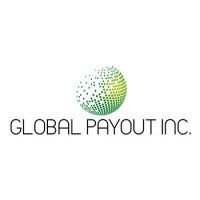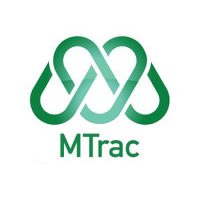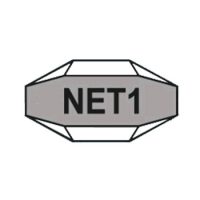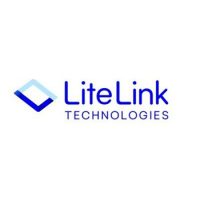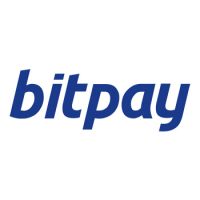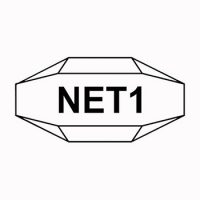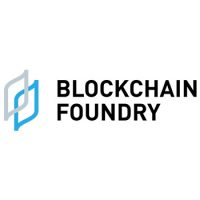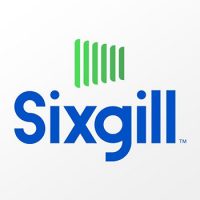Blockchain
AXIA Announces Launch of Hyper-Deflationary Blockchain With Eco-Conscious Proof-of-Participation Protocol

AXIA, the organization delivering the first hyper-deflationary network and digital currency, today announced the official mainnet launch of the AXIA blockchain. The launch follows a short testnet period of just under two months, and comes at a time when inflation is nearing staggering double digit rates in the United States for the first time in decades. AXIA and its native currency, AXIA Coin, provide a hyper-deflationary economic design in which the currency itself becomes more and more scarce through any form of activity or participation across the network, acting as a superior store of value and a reliable hedge against inflation.
While both first and second generation blockchains introduced new decentralized financial structures to the global marketplace, both models have displayed fundamental flaws. These critical issues include poor economic models for their native currencies, lack of interoperability, wealth concentration, slow speeds, negative environmental impacts, and inaccessibility to everyday individuals. AXIA is a third generation blockchain that was developed to specifically address these inefficiencies by:
Providing a superior economic model through its hyper-deflationary design.
The AXIA Network delivers a participatory hyper-deflationary model. Meaning, any and all activity on the AXIA Blockchain and in the ecosystem ensures that AXIA Coin will become more scarce over time, which can benefit users and stakeholders in an ongoing manner. This system also ensures a negative correlation between network demand and supply.
Eliminating congestion to speed up transactions.
By incorporating a network design that allows multiple blockchains to operate simultaneously and numerous strings of processes to be executed in tandem, AXIA sidesteps various network pace issues that have hampered previous generations of blockchains. This key feature allows AXIA users to operate at speeds over 143 times faster than Bitcoin and at least 33.33 times faster than Ethereum.
Addressing the challenges of interoperability between blockchains.
Historically, first and second generation blockchains have offered limited interoperability to their users, and in some cases none at all.
AXIA was specifically designed to address this problem by facilitating over 100 interoperable blockchains (AllyChains) at its outset – the number of which will only grow over time – that operate in conjunction with its primary chain (CoreChain). The AXIA Network allows for greater autonomy and decentralization as AllyChains feature their own governance, native token and business processes while working in unison with the CoreChain. Additionally, AXIA has developed a bridging tool called AXtend that allows multiple projects from other networks to seamlessly join the AXIA blockchain and gain all the benefits it has to offer.
Delivering unprecedented global accessibility that enables anyone with an Internet-connected electronic device to participate in network consensus.
Unlike leading blockchains that often require energy-intensive mining equipment or strong technical know-how, the inclusive design of AXIA ensures that anyone with an Internet connection can participate with the network. This unprecedented global accessibility enables anyone with an electronic device such as a mobile phone or electric car to be part of network consensus. AXIA not only takes decentralization to the next level by welcoming more people into the governance process, but the inclusive nature also enhances security simultaneously – making it much less vulnerable than other networks
Reducing energy consumption.
AXIA is delivering a greener future to blockchain by introducing its innovative Proof-of-Participation (“PoP”) consensus. The PoP model is designed to decrease the energy consumption of each user. The AXIA Network itself uses 246,309 times less energy than Ethereum and, on average, 1,278,244 times less than Bitcoin.
Lowering fees.
The hyper-deflationary design results in gas fees on AXIA (approximately $0.001 USD per transaction) costing significantly less than on legacy blockchains like Bitcoin (around $7.60 per transaction) and Ethereum (approximately $15 per transaction).
“The launch of the AXIA Network mainnet is a giant leap forward, not only for the AXIA Project, but for the design and development of blockchain technology as a whole,” said Nick Agar, the founder of AXIA. “We are proud to have tackled so many of the challenges of blockchains 1.0 and 2.0, while still maintaining our core mission: To provide a blockchain network with the benefit of more sound economics, more inclusivity, energy-efficiency and scalability while offering a higher level of decentralization. Now, anyone with access to the Internet has the resources they need to create a more secure and favorable future for themselves and their loved ones as AXIA can provide opportunities and the means for advancement in ways that don’t exist today.”
AXIA plans to launch the following applications on the network in 2022:
- AXclusive – an NFT platform with cross-chain trading and low fees that are burned.
- AXpay – the AXIA version of Apple Pay, enabling global transactions and payment processing in AXIA Coin.
- AXswap – a DEX (decentralized exchange) with farming pools, lotteries and more.
- AXelerator – an incubator and token launchpad that provides a portal through which participants can apply for funding through AXIA.
Blockchain
Supply Chain Finance Market Forecast to Reach $9.4 Billion by 2029: Increasing Emphasis on Sustainable Sourcing
Global Supply Chain Finance Market
Blockchain
Web3 Startups Raise Nearly $1.9B in Q1 2024 Despite Overall Downtrend in Crypto VC Interest

Venture capital funding for cryptocurrency and blockchain projects has seen a notable resurgence in the first quarter of 2024, marking its first quarterly rise since 2021. Crunchbase data released today indicates that Web3 startups secured nearly $1.9 billion in funding across 346 deals during this period. This represents a substantial 58% increase from the previous quarter, offering a glimmer of hope amidst the ongoing downward trend in overall crypto VC interest.
The recent surge in funding can be attributed to investors adopting a more long-term perspective on Web3, as opposed to the hype-driven “tourist investors” predominant in recent years. Chris Metinko, the author of the report, notes that investors are shifting their focus to the AI sector, indicating a change in investment strategy. There is a growing interest in supporting the foundational infrastructure of the decentralized internet, rather than solely concentrating on crypto wallets and lending platforms, which attracted significant investments during the peak period of 2021 to 2022.
While large funding rounds were relatively uncommon in Q1, several notable investments stood out. Exohood Labs, a company integrating AI, quantum computing, and blockchain, secured a remarkable $112 million seed round at a valuation of $1.4 billion. EigenLabs, an Ether token “restaking” platform, raised $100 million in a Series B round led by a16z crypto. Additionally, Freechat, a decentralized social network leveraging blockchain technology, secured $80 million in a Series A round. These investments, among others, contributed to the increase in valuations and the emergence of four new Web3 unicorns in Q1.
Despite the recent progress, the future trajectory of Web3 remains uncertain. Metinko suggests that the next few quarters will be pivotal in determining the industry’s direction. While investors anticipate a rebound in investment as the decentralized internet evolves, it may take another year for venture capital activity to stabilize after the exuberance of 2021. Factors such as the approval of U.S. spot Bitcoin exchange-traded funds and the upcoming Bitcoin halving could also influence the market, given the rising prices of Bitcoin and Ether.
A noteworthy example of significant funding in the Web3 space is Monad Labs’ recent successful funding round, which secured $225 million led by Paradigm. Monad Labs is a layer-1 blockchain compatible with Ethereum, offering faster transaction processing. This funding round harkens back to the golden era of crypto funding in 2021-2022, when L1 solutions attracted substantial investments.
Earlier this year, Balance, a digital asset custodian based in Canada, announced that it had once again reached $2 billion in assets under custody (AUC) amidst the recent market recovery. Similarly, Korea Digital Asset (KODA), the largest institutional crypto custody service in South Korea, has experienced remarkable growth in crypto assets under its custody, expanding by nearly 248% in the second half of 2023.
Analysts at Bernstein Research project that crypto funds could reach an impressive $500 billion to $650 billion within the next five years, representing a significant leap from the current valuation of approximately $50 billion. This forecast underscores the growing optimism and potential for substantial growth within the crypto industry in the coming years.
Source: cryptonews.com
The post Web3 Startups Raise Nearly $1.9B in Q1 2024 Despite Overall Downtrend in Crypto VC Interest appeared first on HIPTHER Alerts.
Blockchain
ASIC cracks down on blockchain mining firms

Three blockchain mining companies – NGS Crypto, NGS Digital, and NGS Group – along with their directors, Brett Mendham, Ryan Brown, and Mark Ten Caten, are facing legal action from the Australian Securities and Investments Commission (ASIC) for allegedly operating without a license, in violation of Australia’s Corporations Act. ASIC initiated legal proceedings against these entities on April 9, citing concerns about their non-compliance with financial regulations and their solicitation of Australian investors.
According to ASIC, the NGS companies promoted blockchain mining packages with fixed-rate returns to Australian investors, encouraging the transfer of funds from regulated superannuation funds to self-managed superannuation funds (SMSFs) for conversion into cryptocurrency. Approximately 450 Australians invested a total of around USD 41 million in these packages, raising concerns about potential financial losses.
The legal action filed by ASIC alleges that the companies violated section 911A of the Corporations Act, which prohibits companies from providing financial services without a valid Australian Financial Services Licence (AFSL). ASIC is seeking interim and final court orders to prohibit the NGS companies from offering financial services in Australia without an AFSL.
ASIC Chair Joe Longo emphasized the importance of investors carefully considering the risks before investing in crypto-related products through their SMSFs. Longo stated that ASIC’s actions send a message to the crypto industry about the regulator’s commitment to ensuring compliance with regulations and protecting consumers.
In a separate development, the Federal Court appointed receivers for the digital currency assets associated with the NGS companies and their directors to safeguard these assets amid concerns about the risk of dissipation. Mendham was also issued a travel restriction order, preventing him from leaving Australia.
While a court date for the proceedings has not been set, ASIC’s investigation is ongoing, with the regulator continuing to gather evidence and build its case. It is worth noting that the investigated companies share a similar name with NGS Super, a legitimate Australian pensions provider, leading to potential confusion among investors. NGS Super clarified that it is not involved in selling cryptocurrency or related products and has taken legal action to protect its trademark and members’ interests.
Source: iclg.com
The post ASIC cracks down on blockchain mining firms appeared first on HIPTHER Alerts.
-
Blockchain5 days ago
Open-Source Intelligence (OSINT) Market is expected to reach a revenue of USD 64.9 Bn by 2033, at 25.6% CAGR: Dimension Market Research
-

 Blockchain4 days ago
Blockchain4 days agoBlockchain Transforming Travel: Quantum Temple’s Innovative Venture
-

 Blockchain4 days ago
Blockchain4 days agoBybit and World Leaders Forge Major Alliance to Direct Web3 for Social Good
-

 Blockchain2 days ago
Blockchain2 days agoQuantum eMotion Files a Patent for Quantum-based Blockchain Wallet Under the Patent Cooperation Treaty (PCT)
-

 Blockchain Press Releases3 days ago
Blockchain Press Releases3 days agoBybit and Franck Muller Partner with Sidus Heroes to Launch Cosmic Gears: A Pioneering Web3 Game with a $250,000 Prize Pool and Exclusive Watch Collection
-

 Blockchain Press Releases2 days ago
Blockchain Press Releases2 days agoCanaan Shines at Blockchain Life 2024 in Dubai
-

 Blockchain2 days ago
Blockchain2 days agoElizabeth Warren Urges Treasury Secretary Yellen to Implement Strong AML/CFT Measures for Stablecoins
-

 Blockchain Press Releases2 days ago
Blockchain Press Releases2 days agoBybit Institutional Report 2024: Institutions Become Bullish and Eye Challenger Chains, while VC Funding Resurges for Infrastructure, Gaming, and AI

















